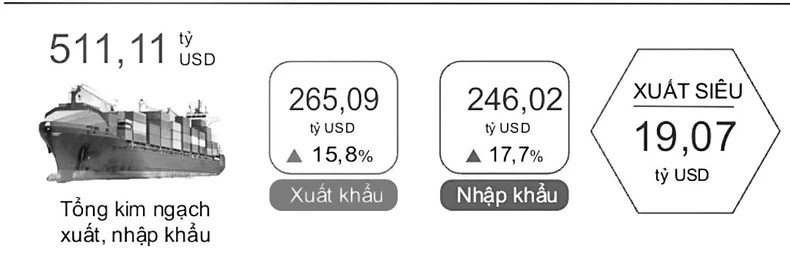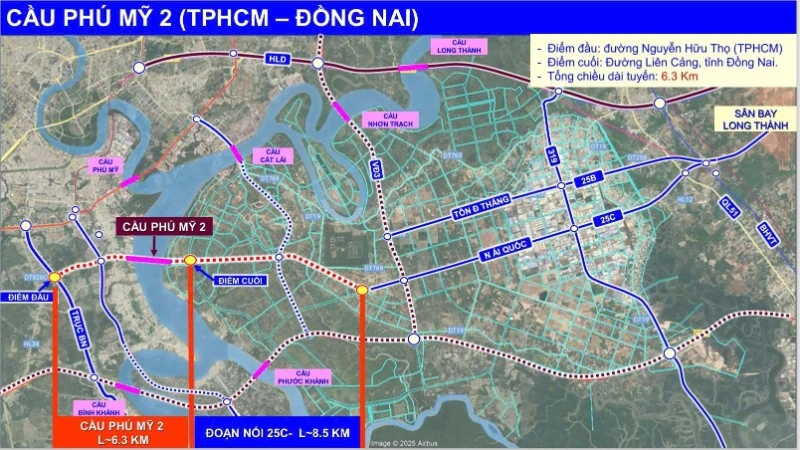The growth momentum returns
At the regular Government meeting in August, citing various economic indicators published by the General Statistics Office to demonstrate the positive trend, Deputy Minister of Planning and Investment Tran Quoc Phuong affirmed that the economy has been recovering robustly, regaining its growth momentum similar to the pre-COVID-19 period, with notable highlights, particularly in exports and foreign direct investment (FDI) attraction.
According to Deputy Minister Tran Quoc Phuong, the economic and social situation in August and over the past eight months has continued to achieve many important, positive outcomes. A key highlight is that the macroeconomic environment remains stable, inflation is under control, and major economic balances are ensured. The fiscal deficit, public, government, and external debt are all within permissible limits. The consumer price index (CPI) for the eight months rose by 4.04% year-on-year, remaining within the control target set by the National Assembly.
Additionally, the General Statistics Office report indicated that exchange rates were managed proactively, flexibly, and promptly, in line with global market developments. Over the past eight months, state budget revenue was estimated to reach 78.5% of the forecast, a year-on-year increase of 17.8%. Import-export turnover, exports, and imports increased by 16.7%, 15.8%, and 17.7%, respectively, compared to last year. The trade surplus is estimated at 19.1 billion USD. These results demonstrate that the supply-side growth drivers continue to improve positively.
Notably, according to the General Statistics Office, growth drivers from the demand side have shown more positive recovery. Industrial production has rebounded quickly, once again becoming a key driver leading overall economic growth. Specifically, the Industrial Production Index (IIP) in August increased by 9.5% year-on-year, and the Purchasing Managers' Index (PMI) reached 52.4 points. This marks the fifth consecutive month that the PMI has been above 50 points, signalling a clear recovery in industrial production. Additionally, FDI continues to be a bright spot, with total registered FDI in the first eight months reaching approximately 20.5 billion USD and disbursed capital of around 14.15 billion USD, demonstrating that foreign investors maintain confidence in Vietnam’s investment environment.
Although the economy has regained its growth momentum, the Ministry of Planning and Investment’s report to the Government candidly pointed out the challenges and difficulties facing Vietnam’s economy. Global and regional challenges continue to impact Vietnam's socioeconomic landscape significantly. Notably, there are still many challenges for growth drivers.
Echoing this perspective, economic expert Le Dang Doanh, former director of the Central Institute for Economic Management, emphasised that Vietnam's highly open economy could foster growth and exports, offering the potential to meet its 2024 growth targets. However, it also makes Vietnam heavily dependent on foreign markets such as China and the US. Domestically, while economic growth shows positive signs, the business community faces many difficulties and requires further support.
The export target needs to be a top priority
A recent report from the World Bank (WB) highlights that as Vietnam enters the third quarter of 2024, the production and business activities of the business community have been gradually recovering, indicating that the country's economy has been stabilising. Vietnam's economic growth is expected to be higher in 2024, driven by the recovery of exports. Specifically, the country's economy is projected to grow by 6.1% in 2024, up from 5% in 2023, reflecting Vietnam's resilience in the face of increasing global challenges.
 |
| Import-export rates in the first eight months of 2024 |
However, despite growth, domestic consumer credit remained weaker compared to previous periods. Additionally, the salary increase from July 1, 2024, impacted domestic demand, which is expected to further support demand in the coming months. Therefore, consumer growth may recover by year-end, though it is unlikely to be too robust. Boosting consumer growth is one of the strategies to promote economic growth in 2024.
Many experts note that the government's adjustment of the 2024 economic growth target to 6.5-7%, up from the previous 6-6.5%, will create significant pressure. Vietnam will need to take many actions in the remaining months of the year to meet this goal while improving the health of its business community and creating momentum to stimulate domestic production and business, with exports as the key driver.
Associate Professor Dr Nguyen Huu Huan, Head of the Financial Market Department at the University of Economics Ho Chi Minh City, noted that exports are one of the main drivers of Vietnam's economic growth and are on a path to recovery. However, he cautioned that exports could face significant challenges if affected by geopolitical factors and continued global tightening of consumer spending. Although export activities are recovering, the growth will be slower and less dramatic compared to previous periods. Currently, with relatively high exchange rates, if exports are promoted and exchange rates stabilise, as they have enjoyed in recent months, it could help stabilise the macro economy and support sustainable economic development in Vietnam. Therefore, prioritising the promotion of exports is crucial. Consistent with its commitment to supporting the business community, the government is also implementing more flexible monetary policies to aid in the recovery of production and business and to boost economic growth.
















